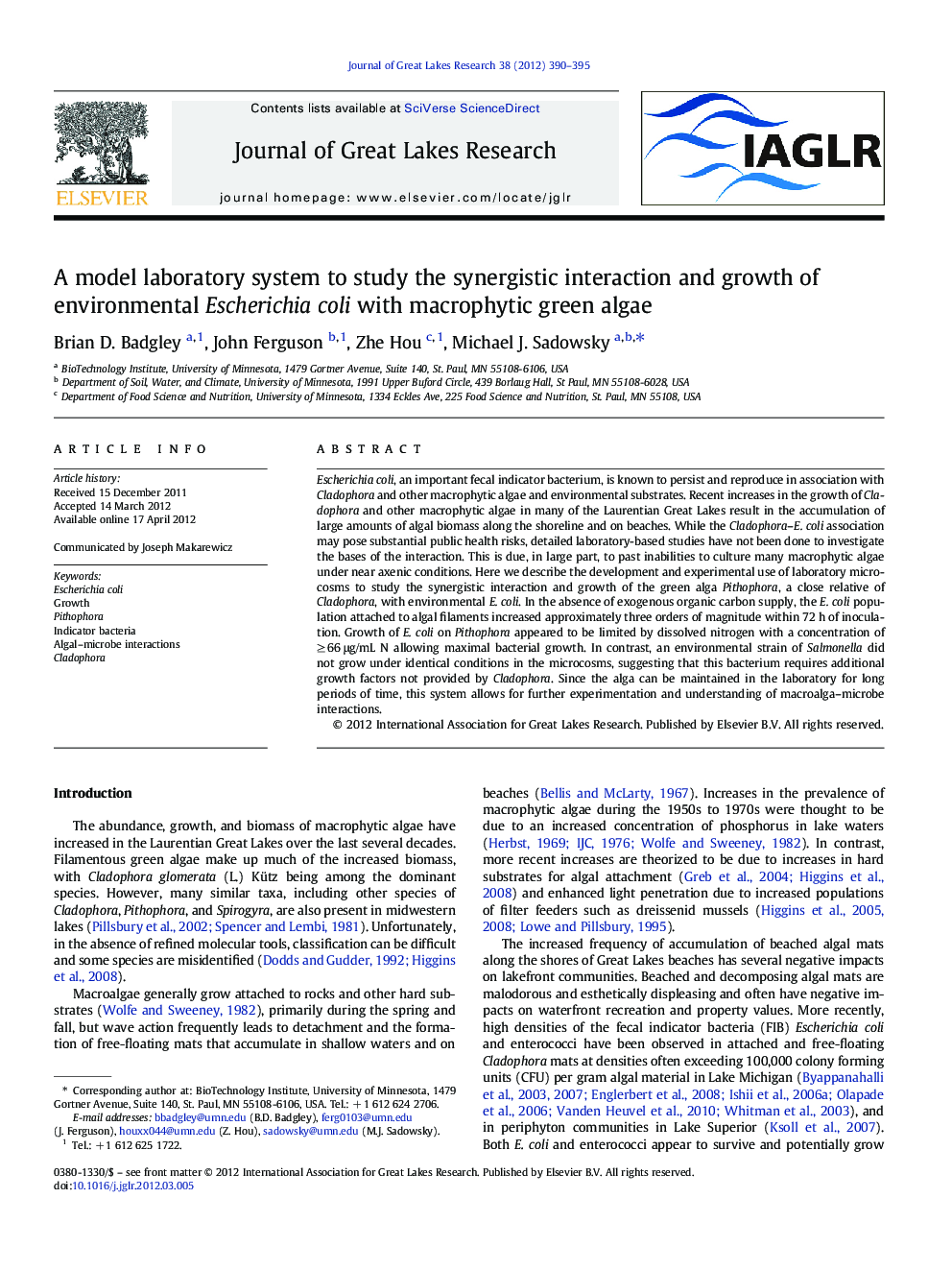| Article ID | Journal | Published Year | Pages | File Type |
|---|---|---|---|---|
| 4398490 | Journal of Great Lakes Research | 2012 | 6 Pages |
Escherichia coli, an important fecal indicator bacterium, is known to persist and reproduce in association with Cladophora and other macrophytic algae and environmental substrates. Recent increases in the growth of Cladophora and other macrophytic algae in many of the Laurentian Great Lakes result in the accumulation of large amounts of algal biomass along the shoreline and on beaches. While the Cladophora–E. coli association may pose substantial public health risks, detailed laboratory-based studies have not been done to investigate the bases of the interaction. This is due, in large part, to past inabilities to culture many macrophytic algae under near axenic conditions. Here we describe the development and experimental use of laboratory microcosms to study the synergistic interaction and growth of the green alga Pithophora, a close relative of Cladophora, with environmental E. coli. In the absence of exogenous organic carbon supply, the E. coli population attached to algal filaments increased approximately three orders of magnitude within 72 h of inoculation. Growth of E. coli on Pithophora appeared to be limited by dissolved nitrogen with a concentration of ≥ 66 μg/mL N allowing maximal bacterial growth. In contrast, an environmental strain of Salmonella did not grow under identical conditions in the microcosms, suggesting that this bacterium requires additional growth factors not provided by Cladophora. Since the alga can be maintained in the laboratory for long periods of time, this system allows for further experimentation and understanding of macroalga–microbe interactions.
► A microcosm system was developed to study interactions of E. coli with macroalgae. ► E. coli populations on Pithophora increased about 3-fold within 72 hours. ► Growth of E. coli on Pithophora appeared to be limited by dissolved nitrogen. ► An environmental strain of Salmonella did not grow on Pithophora. ► This system allows for an understanding of macroalga-microbe interactions.
